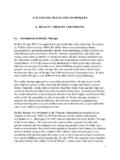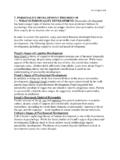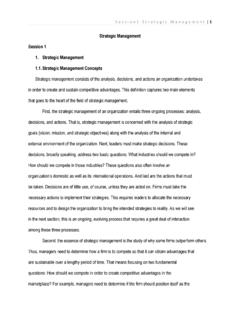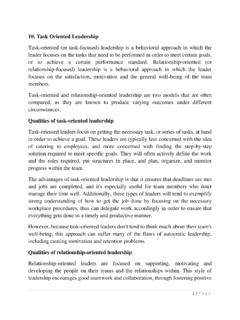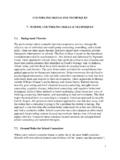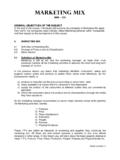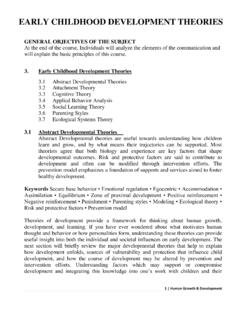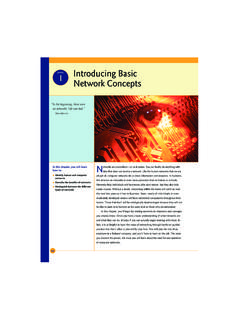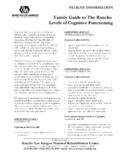Transcription of COUNSELING SKILLS AND TECHNIQUES 10. BASIC …
1 1 COUNSELING SKILLS AND TECHNIQUES 10. BASIC COUNSELING SKILLS & TECHNIQUES Benefits of COUNSELING Tackling the ups, downs, and all around issues that come along with living a healthy life is no easy bull s eye to hit. Every week can bring family emergencies, health problems, relationship issues, and career concerns. With all of these things that we cannot ignore how do we go about facing them head-on with strength, self-assurance, and a clear mind? If you are a counselor, or have been to a counselor before, you would know the benefits that being able to speak with someone one-on-one about your issues have to offer. There is no shame in asking for help, and there are plenty of people that are qualified professionals that are here to service your personal, career, or family needs.
2 This summary will go over some helpful COUNSELING TECHNIQUES that, if you are a counselor, you are likely to put into play, and, if you are a patient, you can look forward to engaging in. So get ready to open up to make the best use of COUNSELING TECHNIQUES . First, what are the benefits of COUNSELING ? These are helpful to know whether you are a counselor or wanting to be counseled as you will see why COUNSELING is so important. COUNSELING can help Feel better about yourself. Feel more at peace, at ease in your daily activities, more comfortable, and more secure in the world. Feel more successful and more joyful on a more regular basis. Feel more connected to others, especially those who are close to you, such as your family , spouse, or best friends.
3 Reduce stress at home, in the workplace, or in relationships. Help with your physical health by reducing emotional worries or stressors. Work through your problems with a skilled and compassionate professional counselor. Identify the goals that you have in life, as well make new goals that you want to achieve. Learn new behaviors or responses to situations that can help you better achieve your goals. 2 Establish healthy and efficient ways and TECHNIQUES for reaching your goals. Understand your own thoughts, feelings, and responses. Understand your loved ones and your relationships with them. Develop a safe and friendly listening ear. Speak with a skilled professional about your fears and perceptions of the world, and others.
4 Feel safe about expressing any personal troubles or private concerns. Work towards greater self-fulfillment. 24 COUNSELING TECHNIQUES There are many different TECHNIQUES that counselors can use with their clients. Here is a look at some of the TECHNIQUES that are felt to be most effective during a COUNSELING session: Spheres of Influence: This assessment tool will get the individual to look at areas of their life and see which areas may be impacting and influencing them. The person s job is to figure out which systems in their life give them strength, and which ones give them stress. Some spheres of influence to consider are: themselves, immediate family , friends, husband or wife, extended family , job or school, community, culture or religion, and any external influences.
5 Clarification: A counselor should often ask their client to clarify what they are telling them to make sure they understand the situation correctly. This will help the counselor avoid any misconceptions or avoid them having to make any assumptions that could hinder their feedback. Client Expectations: When a person enters therapy, they should voice their opinions about COUNSELING and their beliefs about treatment. In the beginning, they should be able to communicate with their counselor as to what they expect to get out of COUNSELING . This can help the counselor guide and direct their COUNSELING accordingly. Confrontation: This does not mean the client confronting the therapist, or vice versa. The confrontation that should happen here is within the client.
6 The client should be able to self-examine themselves during COUNSELING . However, the speed at which they do this should be discussed between the counselor and the client. Congruence: This has to do with the counselor being genuine with their feedback and beliefs about their client s situation and progress. The more 3 authentic and true they are with their COUNSELING , the more that their client and work to grow and benefit from their help. Core Conditions: This technique in COUNSELING goes over some essential traits that the counselor needs to integrate for effective COUNSELING , which are: positive regard, empathy, congruence or genuineness, and warmth. Encouraging: Being encouraging as a counselor for your client is an essential technique that will help facilitate confidence and respect between both parties.
7 This technique asks that the counselor focus on the client s strengths and assets to help them see themselves in a positive light. This will help with the client s progression. Engagement: As a therapist, having a good, yet professional relationship with your client is essential. However, there are bound to be difficult moments in COUNSELING sessions, which will require influential engagement on the counselor s behalf. Focusing: This technique involves the counselor demonstrating that they understand what their client is experiencing by using non-judgmental attention without any words. Focusing can help the counselor determine what the client needs to obtain next from their services. Immediacy: This technique features the counselor speaking openly about something that is occurring in the present moment.
8 This helps the client learn from their real life experiences and apply this to their reactions for other past situations. Listening SKILLS : With any relationship, listening SKILLS are needed to show that the counselor understands and interprets the information that their client gives them correctly. The counselor should do this by showing attentiveness in non-verbal ways, such as: summarizing, capping, or matching the body language of their clients. Open-Ended Questions: Open-ended questions encourage people in a COUNSELING session to give more details on their discussion. Therefore, these types of questions are used as a technique by counselors to help their clients answer how, why, and what. Paraphrasing: This technique will show clients that the counselor is listening to their information and processing what they have been telling them.
9 Paraphrasing is also good to reiterate or clarify any misinformation that might have occurred. Positive Asset Search: A positive technique used by counselors helps clients think up their positive strengths and attributes to get them into a strong mindset about themselves. Reflection of Feeling: Counselors use this technique to show their clients that they are fully aware of the feelings that their client is experiencing. They 4 can do this by using exact words and phrases that their client is expressing to them. Miracle Question: The technique of asking a question of this sort will help the client see the world in a different way or perspective. A miracle question could be something along the lines of: What would your world look like if a miracle occurred?
10 What would that miracle be and how would it change things? Stages of Change: By assessing a client s needs, a counselor can determine the changes that need to occur for their client, and when they should take place. This can be determined by what they believe to be most important. Trustworthiness: The counselor must create an environment for their client as such that their client feels that they have the capacity to trust their counselor. A therapist must be: congruent, warm, empathetic, and speak with positive regard to their client. Capping: A lot of counselors use the technique of capping during their sessions. Capping involves changing a conversation s direction from emotional to cognitive if the counselor feels their client s emotions need to be calmed or regulated.
